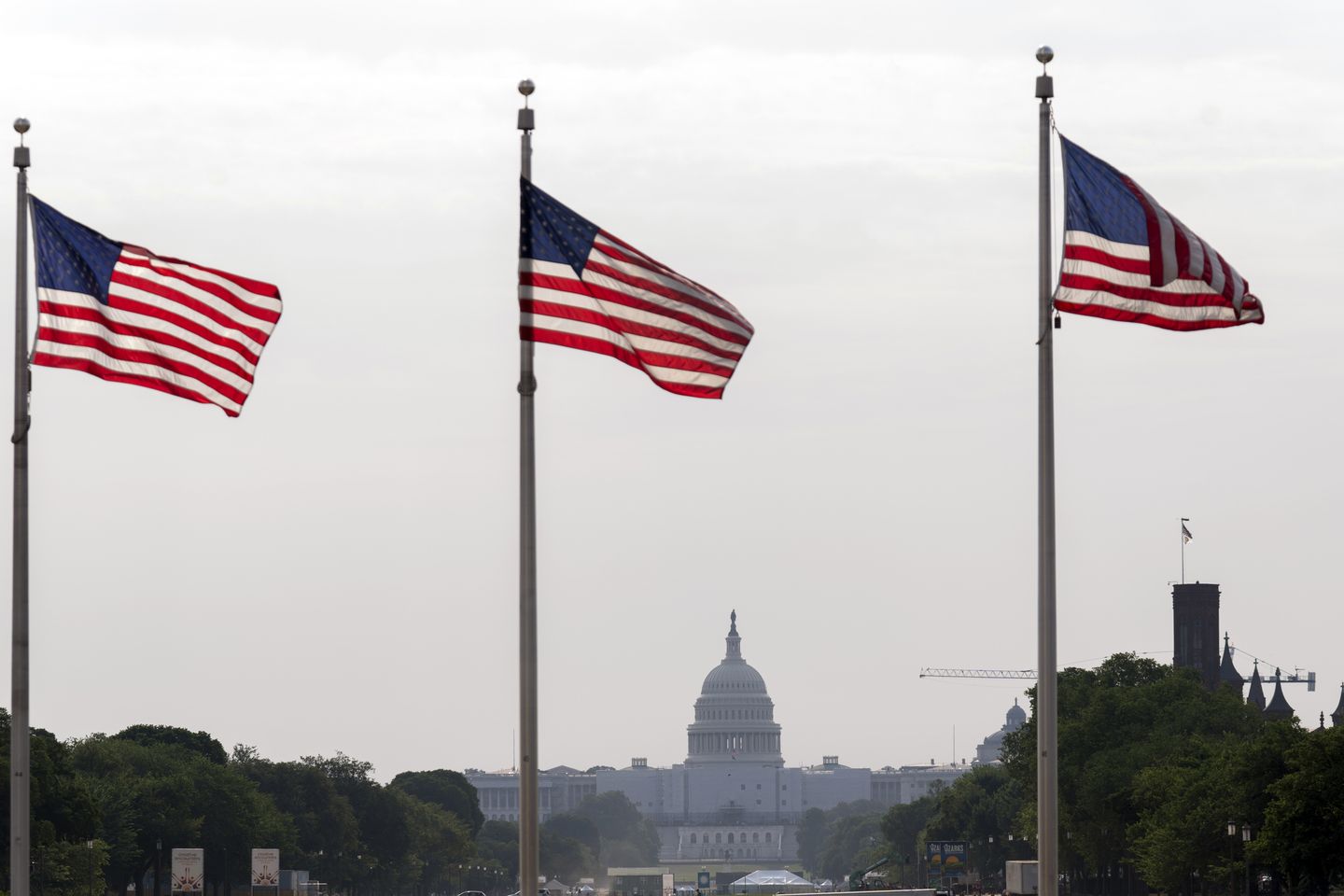
Canadian wildfire smoke helped earn the Washington-Baltimore-Arlington area an F grade for daily particle pollution in an annual report card from the American Lung Association.
Released Wednesday, the ALA’s “2025 State of the Air” report also ranked the D.C. metro area as the 36th most polluted nationally and the second-worst in the mid-Atlantic region after New York-Newark for ozone smoke from 2021 to 2023.
The report cited solid and liquid particles from Canadian wildfires drifting into the District of Columbia in June 2023 as a contributing factor in downgrading the area from a C in last year’s report, which awarded a rare passing grade from 2020 to 2022.
Aleks Casper, ALA director of advocacy, said the findings call on D.C. policymakers to “improve our air quality.”
“Sadly, too many people in the metro area are living with dangerous levels of ozone and particle pollution,” Ms. Casper said. “This pollution is making kids have asthma attacks, causing people who work outdoors to get sick and unable to work, and even contributing to low birth weight in babies.”
The annual report card uses Environmental Protection Agency data to track and grade Americans’ exposure to unhealthy air pollution during three-year periods.
It found that 156 million people, or 46% of the U.S. population, lived in areas with failing air quality from 2021 to 2023.
Baltimore County, Maryland, was the worst for ground-level ozone smog in the D.C. area, averaging 7.5 days per year with unhealthy levels.
The D.C. metro area ranked 53rd worst for short-term particle pollution in the nation, slipping from 64th worst in last year’s report.
Over that period, the tally of unhealthy days increased from 1.7 days a year to 3.7 in D.C., the worst spot in the metro area for short-term particle pollution.
“Both ozone and particle pollution can lead to premature death and cause serious health issues such as asthma attacks, heart attacks, strokes, preterm births and even problems with cognitive function later in life,” Ms. Casper said. “Particle pollution can also increase the risk of lung cancer.”
This year’s report also called on Americans to support the Environmental Protection Agency, calling it “essential to protecting people’s health from ozone and particle pollution.”
The Trump administration has moved to fire hundreds of EPA employees, deregulate the agency and cancel $14 billion in climate change grants approved by the Biden administration as part of a broader effort to cut government spending.
“Without EPA staff and programs, families won’t know what’s in the air they are breathing, and efforts to clean up air pollution will be undone,” the American Lung Association said.
The Washington Times has reached out to the White House for comment.
EPA Administrator Lee Zeldin announced Monday that he would fire 280 staffers and reassign 175 others from tasks regarding what liberals call environmental justice and inclusivity.
“The problem is that, in the name of environmental justice, a dollar will get secured and not get spent on remediating that environmental issue,” Mr. Zeldin said.












